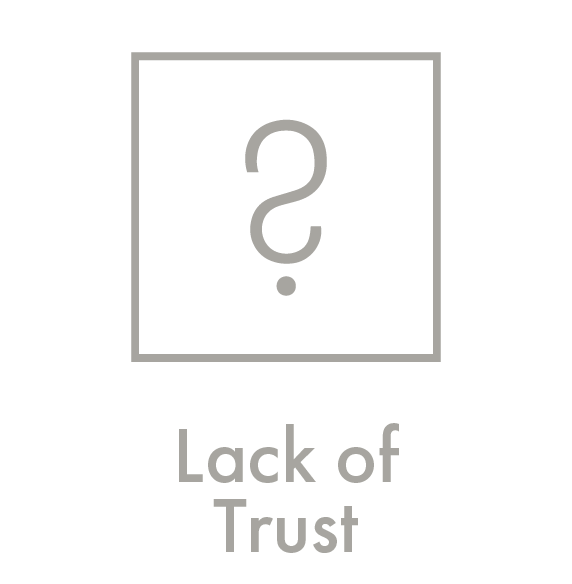
Willis Tower
— Reimagining the ‘My Willis Tower’ App for 2020 —
Overview
Scope
User Research
Content Strategy
Prototyping
Usability Testing
My Role
Client Liaison
User Research
Business Analysis
Content Strategy
Teammates
Bianca Gay
Nick Moen
Duration
2-Week Student Project
UX for Workplace Safety
In the spring of 2020, Covid-19 completely redefined our lives in the US, and so many of us simply long for “normal” again. So, why does this project matter? Because this is UX research and design in action. This is UX mitigating the upheaval of a global pandemic, helping us return to work, and allowing us to find some shred of “normal.”
Client
Willis Tower (WT), formerly Sears Tower, is one of the largest commercial office buildings in the world. Over 100 companies and 20,000 employees work at this iconic skyscraper.
Background
Covid-19 has changed the way we work and has taken a hefty toll on commercial office buildings. Willis Tower, a 4.5 million-square-foot office building, is no exception. The building underwent a $500 million renovation in 2019, and it’s imperative that it adapts to retain tenants and protect this tremendous investment.
The ‘My Willis Tower’ App
In conjunction with the 2019 renovation, Willis Tower partnered with HqO, a tenant experience (TeX) software platform to develop the “My Willis Tower” app, which is exclusively for WT tenants. The app serves three primary purposes:
The app enables touch-less (and card-less) entry and guest passes and lets tenants communicate directly with building staff.
Tenants are encouraged to take full advantage of the building’s offerings—from tenant-only events to private lounges.
The stores, services, and restaurants within the building can utilize the app for marketing and providing tenants with promotions.
The Challenge
How do we go back to work after a global pandemic?
As people return to work at Willis Tower in the wake of Covid-19, they need a reliable way to receive updates about ongoing and future health and safety regulations. They need to get back to a modified-life-as-we-know-it safely.
Research Process
Our research process was straightforward yet in-depth and informative on every level:
(click on images to zoom)
Step One: User Interviews
In order to gain a holistic understanding of the app’s usage and intentions, we conducted interviews with four types of users—tenants, building staff, leasing brokers, and building engineers.
Step Two: Business Analysis
Our comparison of My WT to cruise line apps that offer similar “home away from home” amenities and serve similar volumes of people was far more informative than our comparison to competing buildings’ TeX apps.
Step Three: Persona Development
Based on our findings, we developed two personas—Work Walter and Elite Emily. These personas represent the two predominant types of tenants working at Willis Tower.
User Insights
Throughout our research, users unanimously echoed three concerns:
If there was going to be a workplace, users wanted to know how Covid was going to change their day-to-day and how to safely live as normally as possible.
Between receiving emails, social media notifications, and app notifications from WT, tenants were overwhelmed by the constant stream of communication.
In the midst of a worldwide scramble to convey life and death information, our users were frustrated with and wary of misinformation.
The Solution
Leveraging technology to return to work as safely and “normally” as possible.
By providing tenants with a singular reliable way to receive updates about ongoing health and safety regulations through the app, they will feel safe and informed when trying to return to work.
Solution Approach
Our proposed solution greatly benefits both the user and the stakeholder:
Promote the app as the primary source of news. Instead of searching through emails, websites, and social media, tenants know exactly where to find current information.
Rather than stretching personnel and resources to communicate across a variety of channels, a single news source enables WT to communicate information in real-time.
Adding highly-customizable notification preferences grants users agency, allowing a diverse tenant population to dictate how and when they interact with the app.
Design Development
Our solution didn’t require redesigning the My WT app, it simply added to and refined it for the Covid-19 workplace:
(click on images to zoom)
Step One: Information Architecture
Focus areas of improvement within the app’s existing information architecture
Step Two: User Flows
User flow for each persona
Step Three: Sketch
Preliminary sketches of onboarding and main menus
Step Four: Wireframe
Initial wireframes of proposed solution
Step Five: User Testing
User feedback from wireframe testing
Step Six: Prototype
Initial prototype screens with highlighted changes
Test the Prototype
Next Steps
Additional
User Testing
In my opinion, additional user testing is always, always the first next step. The more data, the better, so test, test away.
Notification
Setup
The app requires an easy onboarding process that allows users to connect and customize their app experience.
Building System
Integration
This portion of post-Covid office reentry involves incorporating app into the space sensors already installed in the building.
Personal Growth
Focus
I’m an idea generator who approaches every project with a million and one ideas. This project’s two-week deadline forced my team and I to hone in on the most effective and realistic solutions.
Advocate
UX-ers love the user, but it means we might forget the stakeholder. This project brought me head-to-head with my former life in the commercial real estate/architecture industry, reminding me that the solution we developed needed to benefit the stakeholder’s I knew personally just as much as the users we were researching.
Order
I love mapping out information, identifying inconsistencies, and uncovering “intuitive” solutions. My greatest desire is to develop the perfect outline… for anything. The vast, and frankly, disorganized information architecture of the My WT app was a dream come true in some weird, weird way.










